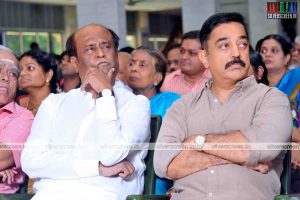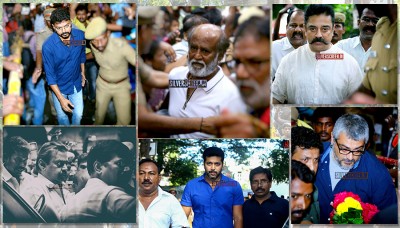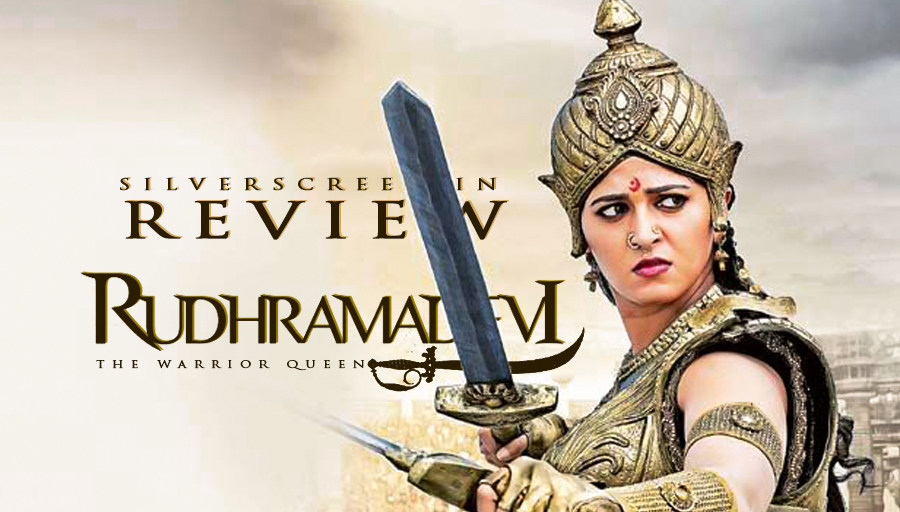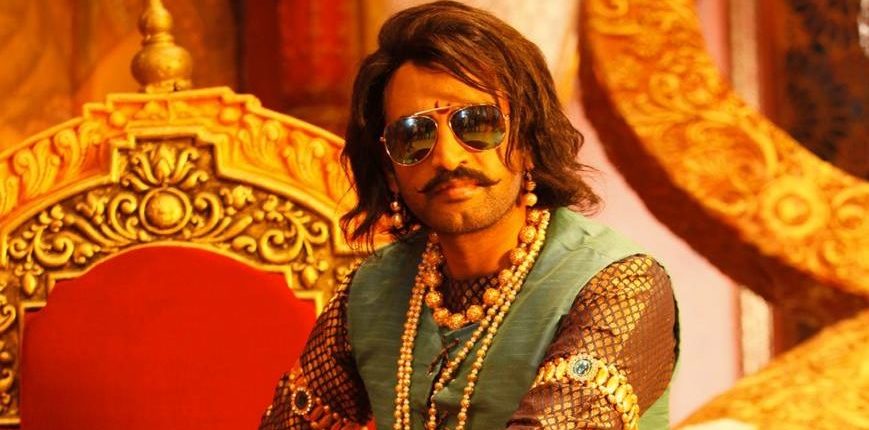Early Manorama was reeling lines off from memory, enjoying herself as she switched Tamil accents with ease. The trademark drawl was out in full view. The lines stretched on, a multi-page monologue. Achi was grateful to be performing again.
The audience was lapping it up. She had barely finished when the applause began. “I’ll die happily now,” she said. The applause stopped. Manorama looked at the audience again, turned around to her fellow actors on the stage. And said it again, “I’m so happy, I’ll gladly die now.”
Illness and injury had kept Manorama had been out of the public eye for the last year. People said she had died, but she hadn’t. She had stopped working though, and that upset her more than she let on. But now, she was back on stage, a surprise visitor at an event organised by cinema journalists. Sitting next to her friend Kamalhassan, she was soaking up the love and the attention.
She died a week later.
*****

haroldmaude
Humans like to gawk.
In the 1971 romantic dark comedy Harold and Maude, the two protagonists meet while indulging in their favourite past-time – attending funerals. They consume grief vicariously, walking on the edge of coffins without having to worry about falling in.
It is a morbid pastime, but at least they were not trying to take selfies with the mourners.
Nearly 150,000 people die every day. One family’s grief does not bring another’s life to a standstill; people sympathize with the mourners and give them space to grieve, but go on with their own lives.
Except when the dead person is well-known.
*****

2015 witnessed the fading of several Tamil film luminaries. Editor TE Kishore collapsed at his editing table. There was the loss of cinematographer Aloysius Vincent, music director MS Viswanathan, and RC Sakthi, a close friend of Kamal Haasan’s. Producer D Ramanaidu, singer Radhika Thilak, and composer Ravindra Jain. There were public funerals that followed many of these deaths, often attended by other celebrities.
Fans of the dead person attended to grieve.
Fans of the mourning celebrities attended to get a glimpse of their favourite actor or actress.
Meanwhile, jerks attended to try and take selfies with their favourite actor, so what if they are crying, right? They shoved the others around, hooted loudly when their favourite star showed up.
*****
For a journalist, covering a funeral comes with inherent contradictions. Journalistic ethics – and compassion – require them to not intrude on other people’s grief. Yet they also have to air private moments of grief for public consumption.

In a funeral involving celebrities, family members often get no privacy. ‘Heartfelt’ expressions of grief are solicited. Even the policemen and the passing traffic cannot but move in slow-motion. Visiting celebrities come to pay their respects.
For some fans, who loved their artist the way Cordelia loved her father, private moments of grief at home, are enough.
But in most funeral footage, there’s no dearth of people looking directly into the camera, for the reflected glory of being on TV and on social media. Over and over again.
This insertion into the frame is also a disruption of the moment of grief. Like the persistent sounds of a journalist live tweeting a memorial service, it becomes the abduction of a moment. From respectful remembrance to TV ratings. And for some fans, a kind of tourist memorabilia, when they take selfies and try to shake hands with actors and directors.
Mania to get pics with celebs at a funeral ! Can’t get more meaningless pic.twitter.com/pdtNO3jhpG
— Priyamvatha (@Priyamvathap) October 11, 2015
Actress Kushboo, who came to pay her respects at late music director MS Viswanathan’s funeral, was asked to pose for a selfie. Actor Kamal Haasan had angry stares for fans with such requests. And in this video of K Balachander, we see the normalisation of grief, and footage of fans behaving aggressively with grieving celebrities. *****

There is chaos when certain celebrities arrive at a funeral. Rajinikanth’s arrival creates such a frenzy, that there is the danger of a stampede. When Rajinikanth came for a final glimpse of his mentor K Balachander at the burial ground, the actor had to struggle for each step. A man in mourning. Surrounded by hundreds of cheering fans screaming ‘Superstar’. Actor Sarath Kumar tried to push the fans away, as Rajinikanth, with great difficulty, made his way to the car.

Actors like Vijay and Ajith, who rarely make public appearances, are routinely confronted with hostility whenever they step out to attend a funeral. At Manorama’s funeral, actor Ajith along with his wife Shalini, struggled to get inside the house at all. And found it impossible to get out. Forced to leave from a separate entrance, amidst the thundering chants of “Thala Thala”.
Ajith pic.twitter.com/YKeJfH9bg4 — shalini (@shalini_crazy) October 11, 2015
It’s the camera which is supposed to have the power. But in an odd reversal, at these events, photographers and videographers are the ones hounded. Even those who have come for a respectful and discreet picture of mourning are treated like a ‘photographer at a wedding’. Out of nowhere, fans jump in for a picture. A picture which can go viral in a moment. Here death isn’t something fascinating. It is a matter of indifference, almost. Only relevant because it created an occasion. An occasion for a moment of fleeting fame.
*****
With reporting by Janani K and Samidha Satapathy.



